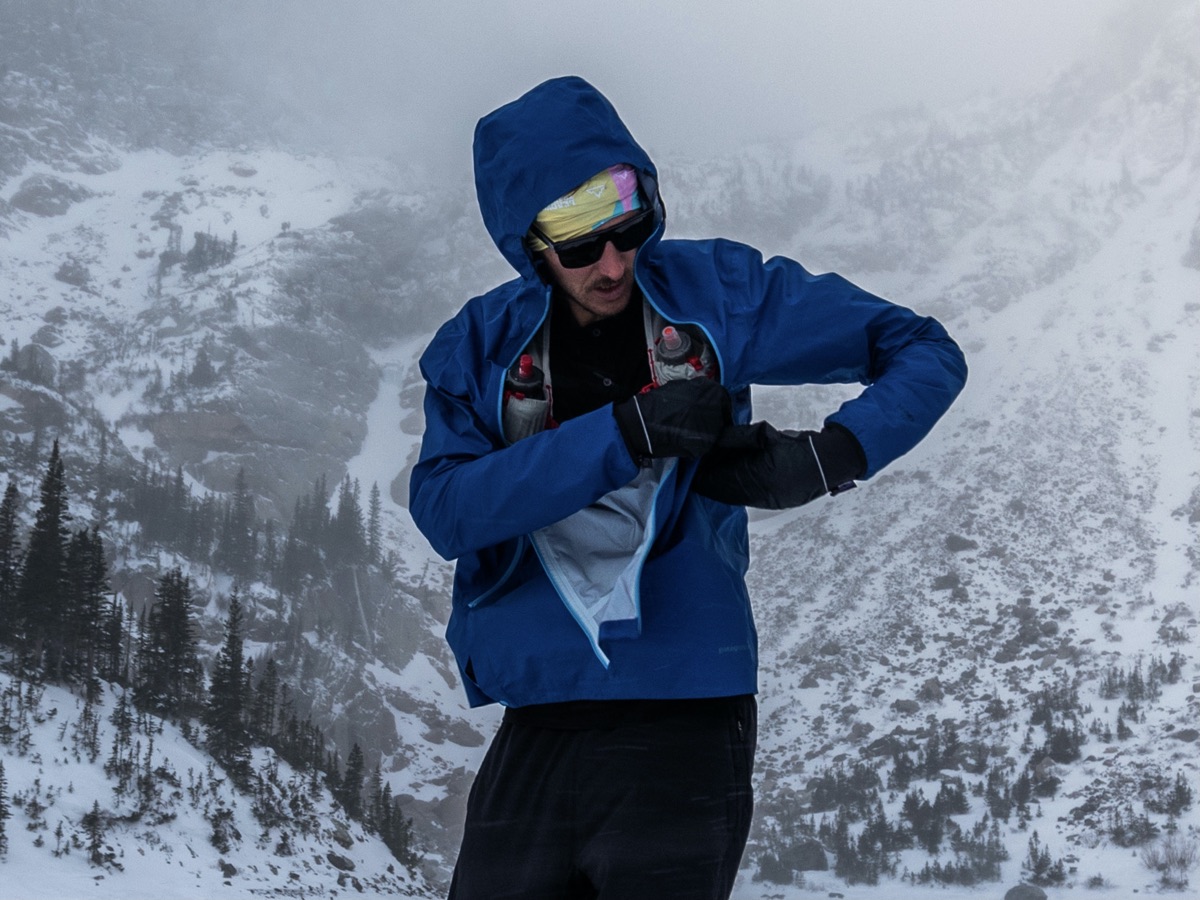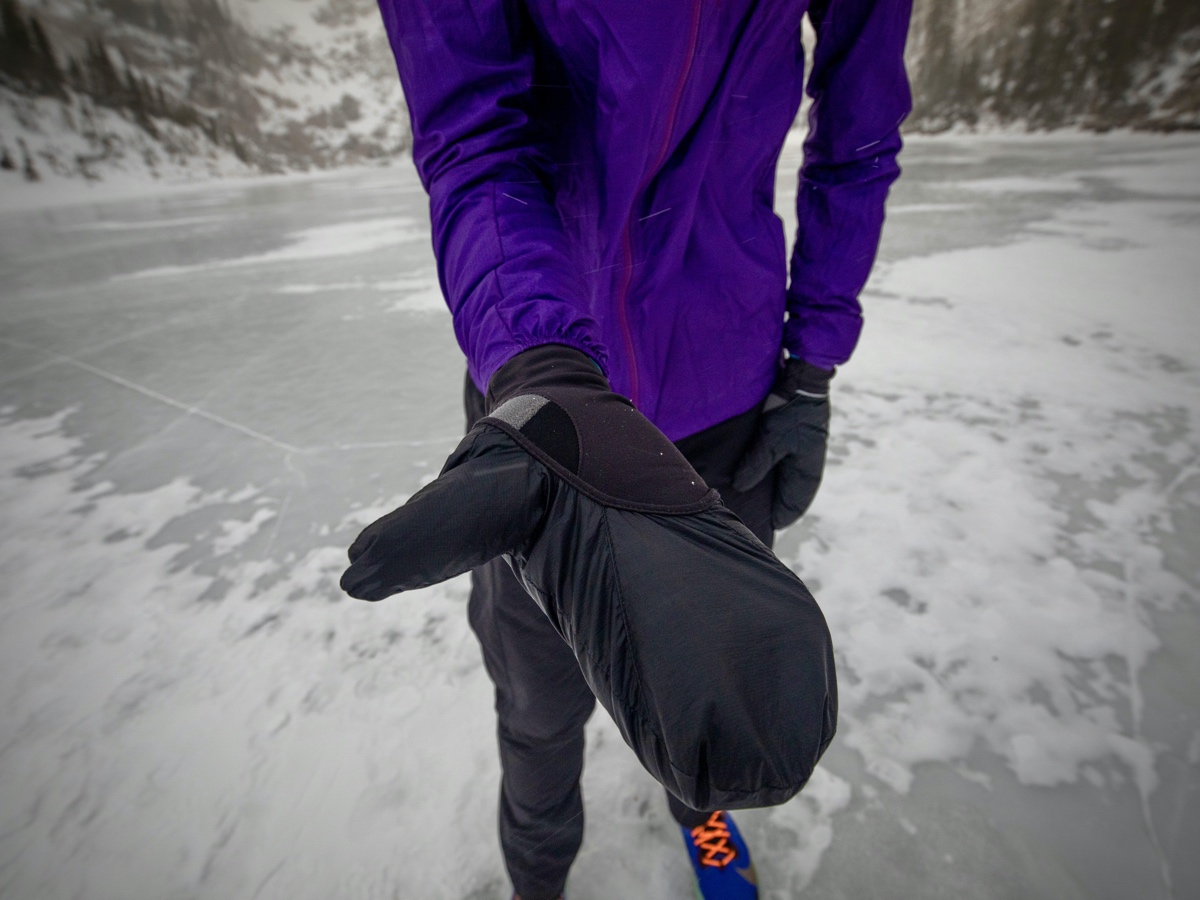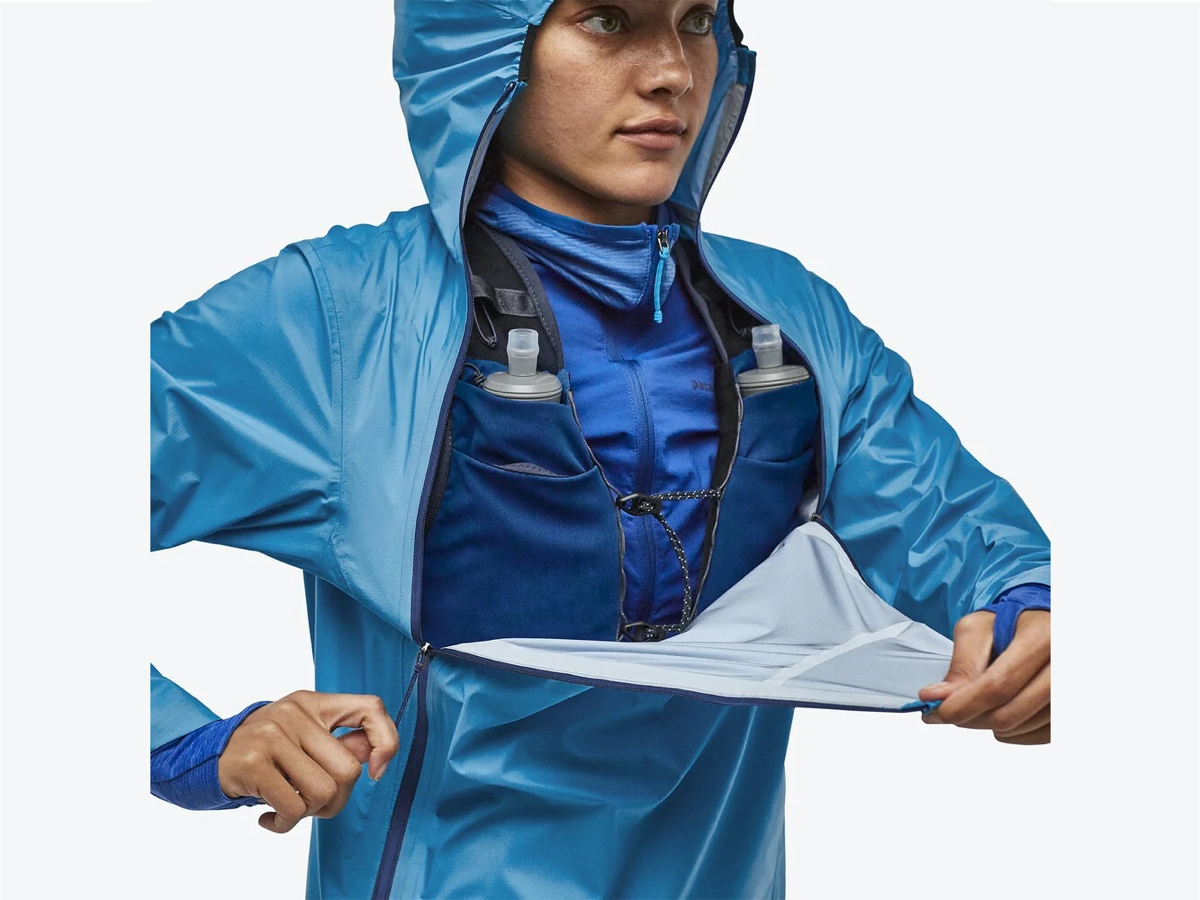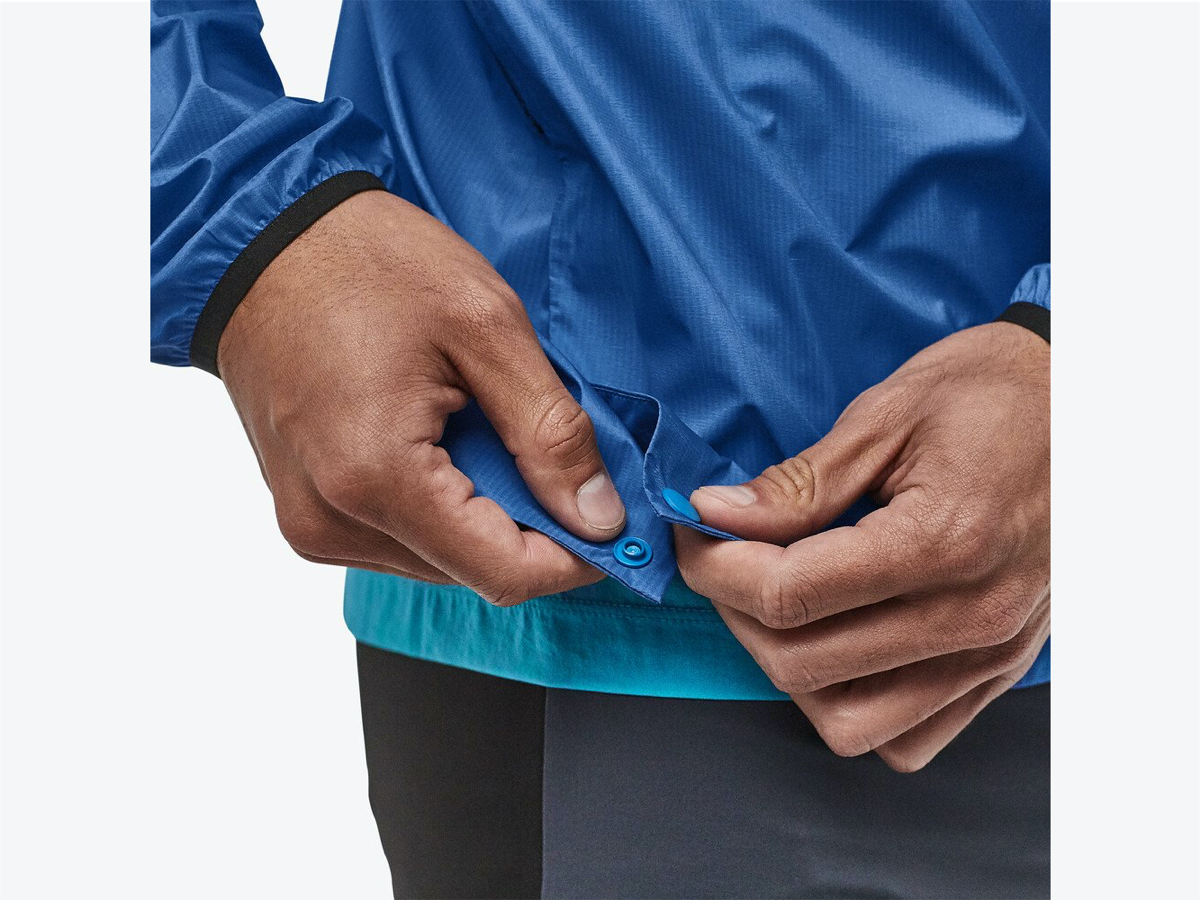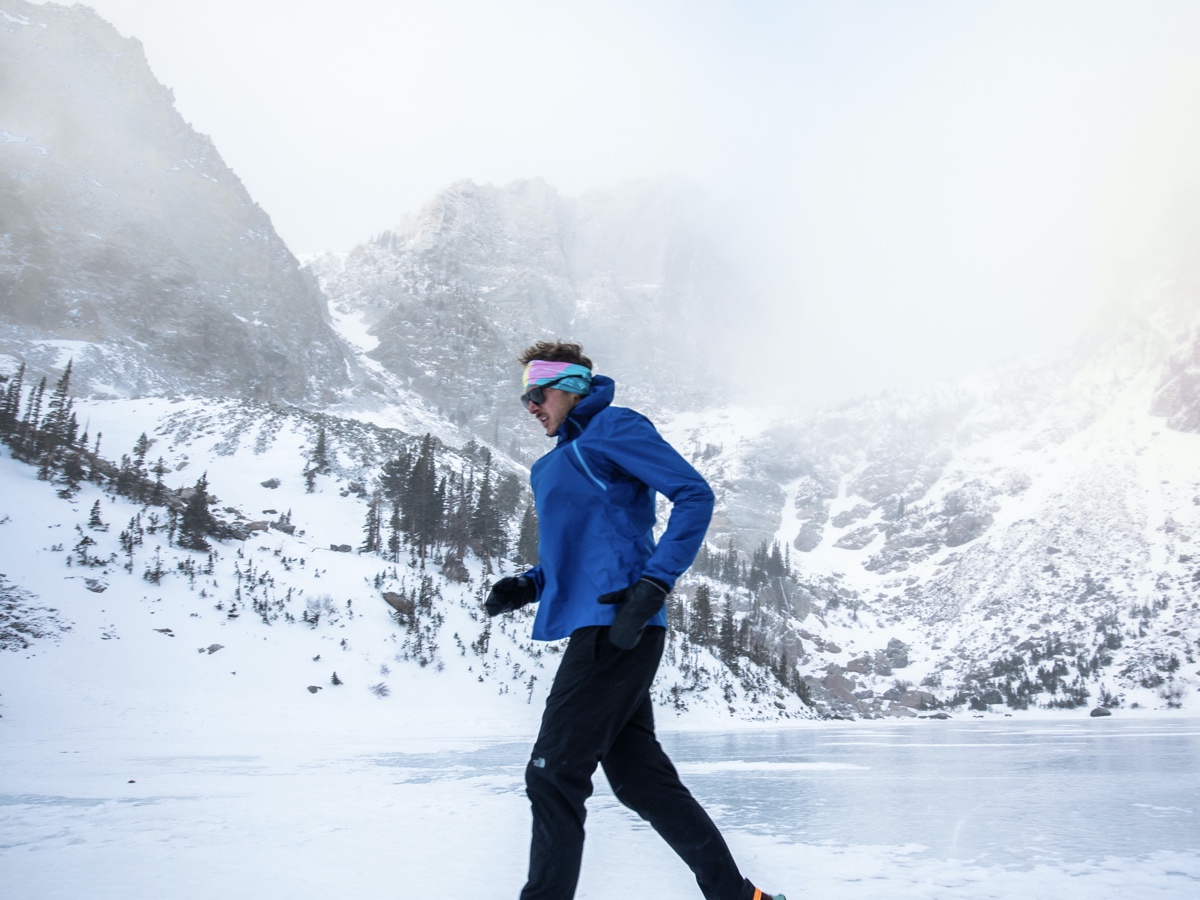In the Patagonia High Endurance Kit, the kit premise is thoughtfully Patagonia: rather than buying a new shirt, jacket, or shorts every season with mismatched functionality, you buy into a collection that works in unison with better materials and technology to support your goals. The High Endurance Kit is tailored toward goals that involve moving fast in big mountains or in places with rough weather.
This review covers what I’d call the prized piece of the High Endurance Kit, the Patagonia Storm Racer Jacket ($249), a waterproof and breathable rain jacket with some truly unique features made for high-energy-output activities in rough conditions. What you see on this jacket, we haven’t seen in any other jacket on the market today. We also review the Patagonia Peak Mission Gloves ($79), which aren’t technically part of the kit, but are worthy of inclusion, in my opinion. These convertible gloves offer great versatility and more warmth than similar gloves made by other brands. I started testing these pieces in the fall, and I’ve been wearing them almost every day of winter so far. This tells you how much I like them.
In August of 2020, iRunFar reviewed three other Patagonia High Endurance Kit items, the Slope Runner Endurance Vest, the Strider Pro Pants, and the Women’s Endless Run Shorts. Be sure to check out that review to learn more about the High Endurance Kit.
Patagonia Storm Racer Jacket
The prized piece of the High Endurance Kit is the Patagonia Storm Racer Jacket. This admittedly unattractively styled waterproof jacket is meant to be an outermost layer, worn over your base layer(s), other jackets, and hydration pack. Thus, it’s roomy in the upper torso on both the front and the back so that it can be worn over protruding items like bottles, extra layers stowed in the pack, and trekking poles attached to the pack. This is a piece where function wins over form, because the Storm Racer Jacket is incredibly thoughtful in its design.
First, there is the fabric, which is made from 100% recycled three-layer nylon with a durable water repellant finish that completely locks out moisture and is somewhat breathable. The hand is not as rough as this might sound; the fabric is fairly soft so it’s not uncomfortable against the skin and it actually moves with you without being stiff or inflexible. The jacket is built to what Patagonia calls their H2No Performance Standard. This means that the fabric is tested to meet certain standards of waterproofness, abrasion resistance, and more. What this functionally means for us is that it works much better than other rain jackets and is also supposed to last for longer. The jacket weighs 7 ounces. In Colorado where I tested the jacket in rainstorms and blowing snowstorms, I found the jacket impenetrable to the elements. It’s literally as protective as a Patagonia ski jacket, but made for a runner.
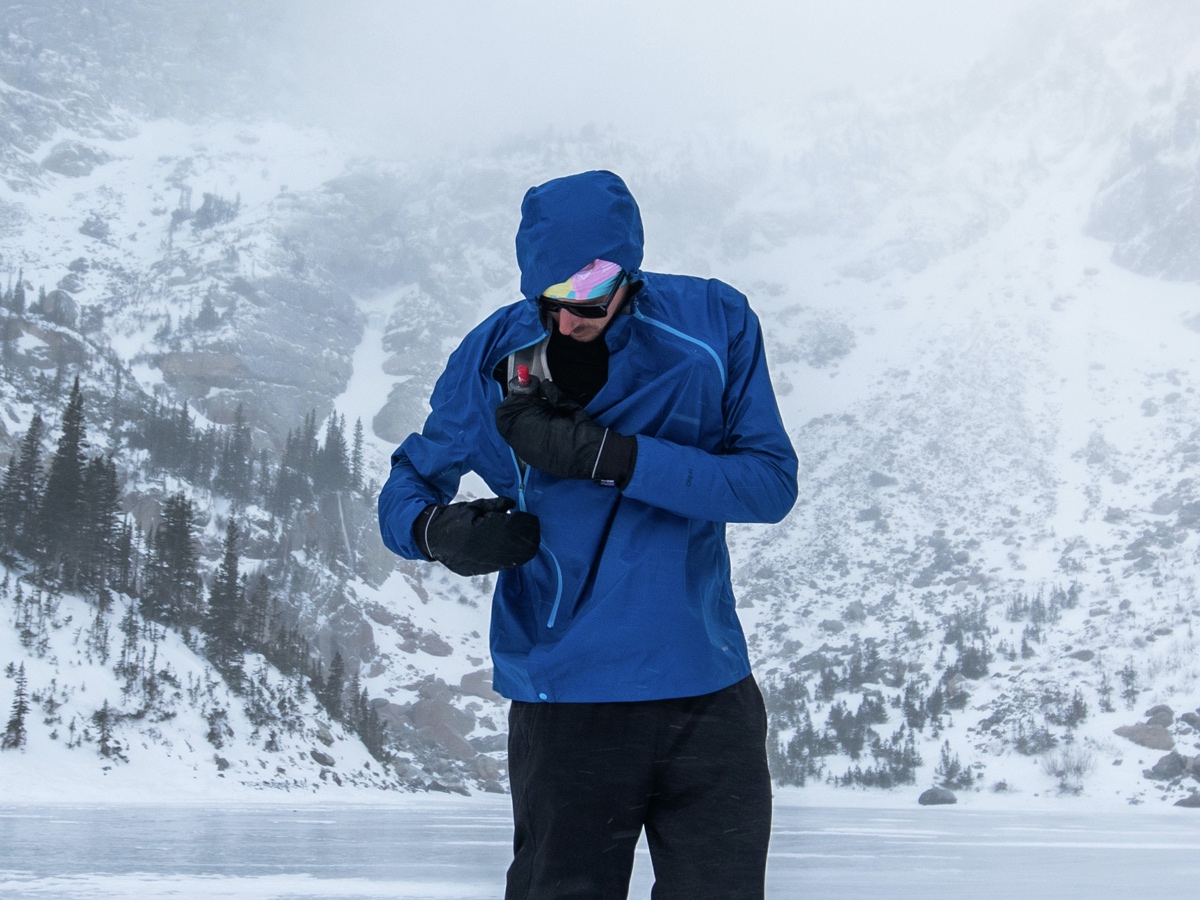
Using a zipper on the Patagonia Storm Racer Jacket to access gear underneath. Photo: Christin Douglas
The entire front panel of the jacket can be zipped down and folded over to open up breathability in the chest as well as access to your hydration pack underneath. It achieves this using two flanking zippers, one a half zipper on the left side and another extending nearly the full length of the jacket on the right side. This brilliant design does what virtually no other standard running rain jacket can and keeps the runner moving–no stopping to put it on or away–when body heat and safety are at a premium in bad mountain conditions.
This brings up a salient point: the Storm Racer Jacket is not designed as a neighborhood running rain jacket. It’s for the unpredictability of the mountains when it’s not only uncomfortable to be caught out by wind, rain, and snow, but it’s also potentially dangerous. Patagonia’s professional runners were instrumental in the development of the High Endurance Kit and if you follow Luke Nelson’s running career, you know he has developed these products by necessity. That said, you certainly can use it in your more local runs and it more than does the trick.
Humidity is not a problem where I live in Colorado, so I can’t rate the jacket in places where moving in moisture-laden air is more common. Though as someone who sweats a lot in any temperature, I comfortably climbed thousands of feet relying on the zippered-down chest access to regulate my temperature. On the way downhill and while my body heat was still high, I could keep the chest panel tucked away while still wearing the hood to keep my head warm and dry.

The Patagonia Storm Racer Jacket showing the front of the jacket folded down for access and ventilation. Photo: Patagonia
The jacket has a snap hem, and climbing is where this comes into play because instead of constricting the torso and hips, it allows you to get more range of motion by opening the snap to expand the hem’s girth when needed. And when it comes to taking the jacket off and putting it away, the process is so simple that I sometimes practiced not out of necessity but just to experiment with how novel it is to be able to keep running while stowing it. I chose the stuff-and-shove option over folding the jacket into its own pocket, which is located in the hood, and putting it away.
There are no pockets on the Patagonia Storm Racer Jacket but I didn’t feel like this was a miss as it’s made to easily access everything in your hydration pack underneath it.
Finally, when both zippers are fully zipped, the jacket collar comes up all the way to your nose, such that in truly awful conditions, you can really close yourself in.
Again, the Storm Racer looks sort of funny without a pack underneath since it’s made roomy to accommodate one. I find that Patagonia in general is sized more roomy than most brands so it’s especially noticeable how big and boxy the jacket is when worn by itself.
The Storm Racer is probably not for everyone and judging by the availability of the jacket, Patagonia knew this. It’s never going to be a mass-market staple but it’s for runners who truly get out there and have the cash to invest in it. I would argue though that once you know about it, the question is why wouldn’t you invest in the Storm Racer as your one and only running rain jacket? It has every quality you get in other jackets but with added features that the competitors don’t in its drop chest, roominess for accessories underneath, and a small footprint for storage. If you can get over the aesthetics, it is the one waterproof jacket you need to face any mountain-running condition, winter included if you’re properly layered.
Patagonia Peak Mission Gloves
The Patagonia Peak Mission Gloves aren’t part of the High Endurance Kit but they are a worthy counterpart. I’ve tested convertible-style gloves from several other manufacturers. You can’t deny how perfect the concept is: two styles in one is perfect for temperature-regulation activities like running and Nordic skiing. Patagonia’s are the best of the options I’ve tested. I have used the gloves on virtually every activity I’ve done this winter (save for an alpine climb on Longs Peak).
The gloves’ fabric is a blend of recycled nylon, spandex, and polyester and is soft and comfortable against the skin. The thumb has a giant, soft nose-wipe panel that really works. What I love most about these gloves are the long cuffs and the pull loops. The loops work perfectly to pull the gloves snug and to take them off when the fabric is bunched up from moisture on your skin. The touch-screen-enabled fabric works, but not perfectly. It takes repeated touches or swipes against your phone’s screen for the convection to occur. The overmitt is made of ripstop nylon, is water and wind resistant, and is stowed in a pocket on the top of the hand when not in use.

The Patagonia Peak Mission Gloves palm side showing the long cuff and pull loop. The overmitt is stowed away in this photo. Photo: Christin Douglas
The only complaint I have about the Peak Mission Gloves is that they are almost too warm–but this is a good problem to have! If you start with cold hands as I often do in runs where the temperature is between 30 and 40 degrees Fahrenheit (-1 to 5 Celsius), I tend to wear the gloves with the ripstop nylon mitt and bunch up my hands inside. Once I get moving and my body temperature increases, I put my fingers in the gloves and stow the mitt. But by then the lack of heat transfer has made my hands warm and almost sweaty. This is a great side effect if you want a super warm pair of gloves that are still very light and can be put away easily.
For some of our favorite running gloves, check out our best running gloves article.
Patagonia Storm Racer Jacket and Peak Mission Gloves Overall Impressions
I predict the Patagonia Storm Racer Jacket and Patagonia Peak Mission Gloves will be pieces I’ll use for many years. I think this is the agreement one makes when buying Patagonia. You pay a little more up front, but the longevity is a built-in feature you amortize over the lifetime of the gear. Patagonia has become a stylish brand but objectively it’s never the most cutting edge or fashion-forward. Perhaps the intention is that if it’s never in style, it can never go out of style over subsequent years. I think this will prove the fate for the Storm Racer Jacket, which as I’ve said is a rather awkward looking but amazingly performing piece. I’m eager to continue testing the Patagonia High Endurance Kit pieces as they are a thoughtful approach to apparel in a sport that consistently churns out usable but less-than-innovative items. If you’re also interested in the High Endurance Kit, don’t forget to check out our review of other items from it.
Call for Comments
- Are you running in the Patagonia Storm Racer Jacket or the Peak Mission Gloves? Leave a comment to share your thoughts on either piece.
- How about other items in the Patagonia Endurance Kit?
[Editor’s Note: If you’re affiliated (i.e., an employee, ambassador, etc.) with a brand, please share your relation in each of your comments on this article. Thanks!]
